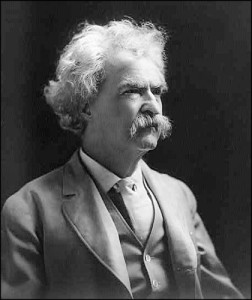Television producers try to get you to come back for more by showing scenes from “the next exciting episode” of whatever program you’ve just watched. Writers have to do the same thing sentence to sentence, paragraph to paragraph, and chapter to chapter. Suspense is one of the tools of the author’s craft that helps pull the reader along.
For me, suspense is the essence of a story that makes me skim a few pages more because I have to know what comes next before I put the book down for the night. Though most easily seen in cliffhanger thriller and action pieces, suspense is also present in more subtle ways when a story has engaging characters or a compelling storyline. Will the young lovers stay together in the face of pressure from their parents? Will the social activist win against the sea of opposition? Stay tuned for the next sentence, paragraph, or chapter to find out. That’s suspense.
A few days prior to my vacation in October, John McCarthy challenged the members of the Deadwood Writers Book Study Group to write a paragraph containing suspense. I took the idea on the trip with me not knowing if I’d do anything with it. While sitting on the beach I wondered how I might describe the scene around me in such a way to make it interesting. What started as an exercise in scene setting became one for developing suspense:
A warm breeze passed over Sarah as she scanned the overcast sky. The clouds kept the sun from making it scorching hot, yet enough blue shown through to make it a pleasant day at the beach. Sunbathers spread out across the sand with no one closer than a hundred feet between. The more cautious among them sat beneath the colorful umbrellas that peppered the landscape. When screams rang out from the ocean, Sarah’s heart raced and her eyes scanned the surf left, right, left, right for the source. It took her several eternal seconds to find the sounds came from a young surf boarder having a good time. “Calm down, Sarah,” she told herself, as she wiped sweat off her face that had nothing to do with the midday heat. “No one’s caught in a riptide like before.”
There are questions this passage provokes that I hope would cause a reader to want to know more and keep reading:
- Who is this character named Sarah? A lifeguard, tourist, or maybe a resident on the beach?
- Who got caught in the riptide? Was it someone close to Sarah?
- Did the person drown or get saved?
- Why did the incident affect Sarah so much?
- What role did she play?
As writers, we must always be aware of what will keep a reader tuned in for more. Thinking about the questions our passages inspire is a good check on the suspense we are trying to create. As we begin to answer those questions, we need new ones to continue the process until we reach a conclusion. Does that mean you have to answer all the questions by the end of your piece? Not necessarily. Sometimes you want to leave a person on a thought provoking note. If you’re writing a series, you might leave the reader with something that nudges them to read the next book or blog post.
Consider these memorable ways that writers/authors have tempted their audiences:
Same bat time, same bat station.
Luke, I am your father.
Happiness is…
Elementary, my dear Watson.
Even if somewhat misquoted, people were so taken with the lures that the lines have become part of the modern lexicon. How can you reach that level of popularity? It all starts when you figure out how to entice your readers to ‘stay tuned.’


